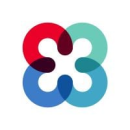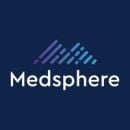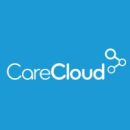It’s quite cloudy in the healthcare sector, technologically speaking.
Cloud computing in healthcare makes medical record-sharing easier and safer, automates backend operations and even facilitates the creation and maintenance of telehealth apps. Utilizing the cloud increases the efficiency of the healthcare industry, while also decreasing costs.
The use of cloud technology in healthcare is growing so fast that total global spending is estimated to reach a global market value at over $89 billion by 2027. In addition, IaaS, a cloud computing model popular for migrating healthcare infrastructures to the cloud, is currently the fastest growing cloud service with a projected CAGR of 32 percent by 2027.
So what does this mean in practice?
At Chicago’s Rush University Medical Center, technology is as ubiquitous as the doctors, nurses and patients who fill the corridors. Amid the army of life-saving machines is an invisible force vital to the hospital’s operations: cloud computing.
It’s used to run critical applications, cull, analyze and extract important information from piles of unstructured data, including physician and lab notes via the natural language processing capabilities of machine learning. Radiologist readings are cloud-analyzed too.
For example, a patient might come in complaining of a cough, chest pains and a headache. The doctor would then use their knowledge to diagnose what’s wrong and record all the pertinent details. Even so, only the primary diagnosis — maybe a secondary or tertiary one — would show up on the patient’s chart. That’s where cloud-based data analysis comes in handy, extracting information that would otherwise remain hidden.
Benefits of Cloud Computing in Healthcare
Benefits of Cloud Computing in Healthcare
- Accelerates clinical analyses and care processes.
- Automates data processing and scalability.
- Increases patient data accessibility.
- Reduces network equipment and staff costs.
- Reduces risk of data loss.
While cloud skeptics remain, many citing privacy concerns in light of the ultra-sensitive information they’re reluctant to share with an outside vendor, the cloud’s many advantages and potential advantages are hard to ignore — hence the escalating adoption rate.
As in lots of other industries, the days of internal IT staff at hospitals and other healthcare institutions are waning as operations migrate to cloud-based software and servers. Proponents of the shift say that means several things, including lower costs and the ability to speed up analysis of important care components, such as clinical notes — all of which, ideally, lead to better care.
Besides the fact that data is processed much more quickly and payroll shrinks considerably in the absence of large in-house IT crews, there are no on-site servers to wipe out or seriously compromise in the case of natural disasters or malicious cyber attacks. Automated scalability is key too.
“If you’ve got an application that’s growing exponentially like EHRs (Electronic Health Records) tend to do, if you want to increase the scale and increase your capacity… it’s a lot easier to do in a cloud-based environment," Bob Krohn, partner and healthcare practice lead at global research and advisory firm ISG, told Healthcare Dive.
Perhaps best of all, doctors, nurses and other healthcare providers have easy access to detailed patient data from different sources, which eliminates the need for massive networks and complex security protocols. Consequently, patients more quickly and accurately get the information, medications and therapies they need. That’s the goal, anyway.
According to information gathered by the healthcare arm of Tokyo-based Renesas Electronics Corporation, the marriage of cloud computing and healthcare has huge potential to improve a host of healthcare-related functions such as telehealth and virtual care, medication adherence, drug anti-theft and counterfeiting measures, resource inefficiency, personal data privacy and the uniformity of medical records. It’s no wonder, then, that more cloud companies are vying for a piece of the healthcare pie.
Listed below are several companies helping hospitals and other health-related organizations streamline operations and improve patient care through the cloud.
13 Examples of Cloud Computing in Healthcare
Cloud Computing for Clinical Development and Research
Microsoft is known for creating a myriad of software applications, several of which are utilized in the healthcare industry. Used in conjunction with AI and IoT technology, Azure is a cloud-based platform which can be used for monitoring patient insights and analytics all within the cloud. Another Microsoft product, HoloLens 2, can project holographic images for the wearer, including any accessible information stored within the cloud. This allows healthcare providers access to patient data and collaborative resources during diagnoses, operations and treatment.
Pfizer is a pharmaceutical and biotechnology company that has utilized cloud services for its projects since 2016. It’s been in the spotlight recently, as it developed a COVID-19 vaccine in partnership with BioNTech. The company also began working alongside Amazon Web Services to create cloud-based solutions that aim to accelerate and improve the development, manufacturing and distribution processes for clinical trial testing.
Cloud Computing for Electronic Health Record Management
TigerConnect is a cloud-based software company that provides healthcare professionals with a HIPAA-compliant messaging platform allowing them to send messages, records, patient data and documents back and forth. It also enables collaboration on documents and treatment plans. One application of the software is physician on-call scheduling, which is facilitated through a scheduling system that can create a year’s worth of schedules nearly instantly.
Consensus Cloud Solutions’ products aim to solve healthcare challenges and improve productivity by using cloud technology to ensure patient data and other critical information from paper documents is accessible to providers. Its portfolio of solutions include HIPAA compliant offerings jSign for esignatures and eFax Corporate for cloud faxing.
Allscripts is a cloud-based platform housing various health documentation management, patient engagement and analytics applications and services. In 2020, Microsoft announced a five-year collaborative extension as a cloud provider for Allscripts’ Sunrise, an electronic health record application. Patty Obermaier, Microsoft’s vice president of U.S. Health and Life Sciences, said in a news story that the alliance with Allscripts hopes to be a “transformational force in the healthcare industry.”
NetApp is a hybrid cloud data services company. Its management platform delivers clinical data in real time to help make operations faster and more efficient through reduced EHR latency, quicker backup and restoration, easier accommodation of data and workload expansion and the streamlining of data management.
Designed to play well with other public clouds, ClearDATA’s HIPAA-compliant cloud protects sensitive patient data via compliance safeguards, DevOps automation and healthcare expertise. The platform also powers critical applications and automatically detects changes in cloud accounts so the company can quickly respond to those changes in a variety of ways.
Medsphere offers a variety of cloud-based IT solutions for healthcare institutions. Its electronic health record platform provides services to multiple sectors, including clinical, financial, accounting, nursing and many others. Employing Microsoft’s secure Azure cloud platform, the company also helps providers deal with scheduling, registration, medical records, billing, claims and more.
Nintex eliminates paper documents, streamlines manual processes and drags important data out of its silos, consequently enhancing the overall patient experience. The company provides its automation services to an array of healthcare industry professionals, from doctors and nurses to the makers of pharmaceuticals and medical devices.
Cloud Computing for Patient experience
EPAM offers its IT consultancy services to the healthcare and life sciences sector, working with clients to incorporate technology into their processes. By cohering physical, digital and data platform products, it is able to offer tech strategies that center patient experience. Its capabilities cover modernization and cloud migration, and EPAM’s portfolio of client solutions has included working on a cloud-based digital experience platform with AI-powered features for data, physician engagement and business operations.
Medable’s medical-grade platform facilitates direct-to-patient healthcare and collaboration by supporting clinical applications and storing personal health information for providers and researchers. In addition, the platform can be used by developers to expand or create apps for mobile, tablet and desktop.
Athenahealth hosts a cloud-based platform for healthcare providers to manage patient data analytics, documentation and services. The application allows for the access of patient health records, telemedicine support, revenue cycle management, personal marketing programs and more.
CareCloud’s open platform helps healthcare providers improve their efficiency and effectiveness. It also lets them connect directly with patients to provide better care. Applications include revenue cycle management, practice management, electronic health records, patient experience, mobile app support, healthcare analytics and more.
Managing Patient Care, Not Patient Data
“Cloud adoption is going to increase very rapidly,” Khan said. “One reason is because all the big players like Microsoft, Google and Amazon have very quickly come to the realization that not many hospitals will be able to continue to work with on-premises data centers. And they’re certifying their data centers for HIPAA (Health Insurance Portability and Accountability Act of 1996) and safe harbor compliance controls. If we are able to get assurances from our partners that they’re high-tech and HIPAA-certified, that makes our job easier. We don’t have to manage infrastructure. And we don’t have to have an extensive security program in place to be able to manage it.”
After all, Khan adds, Rush isn’t in the business of data management.
“Our core business is providing patient care.”



















